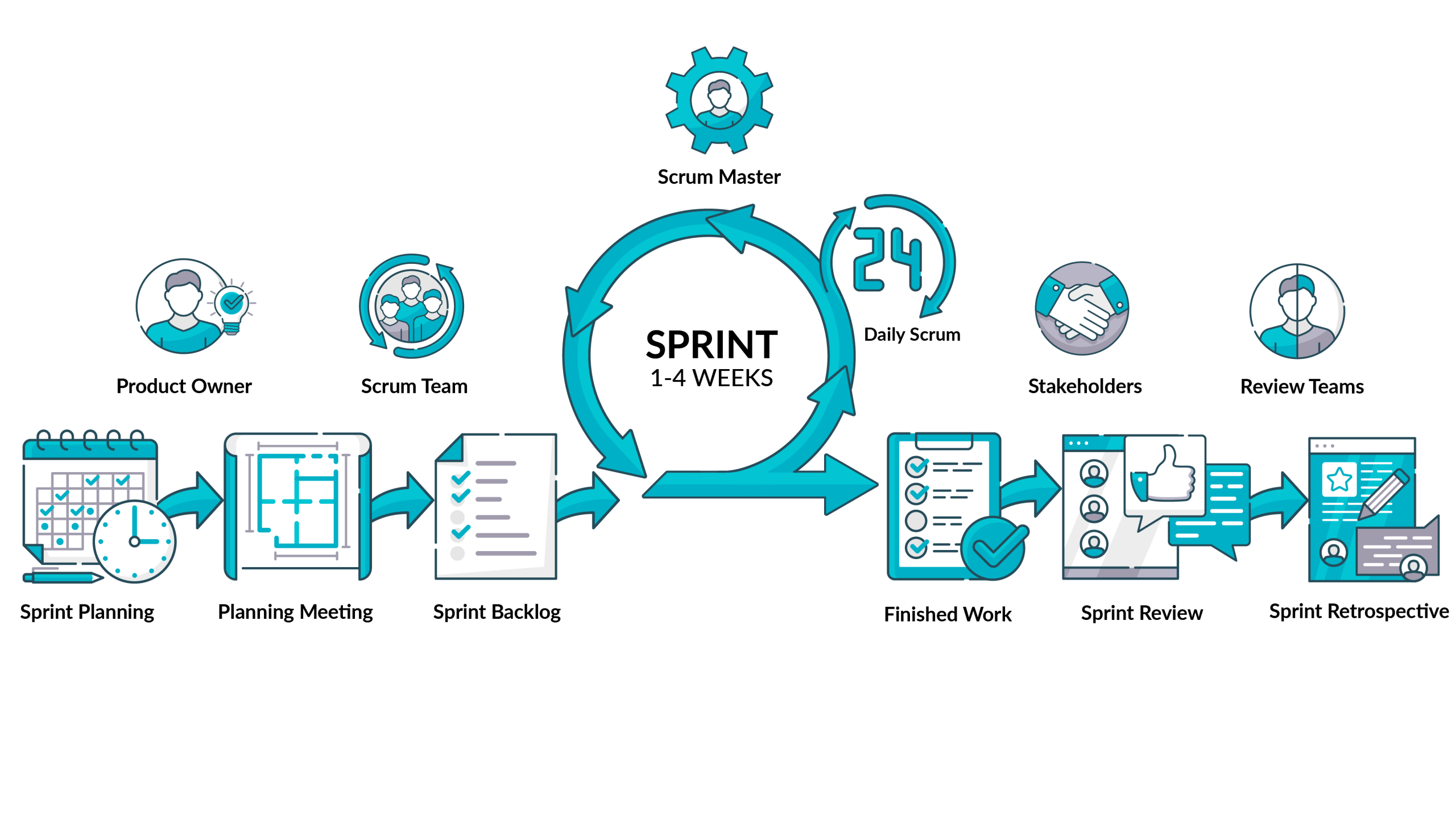Our Work Model
Scrum Process
The framework that holds the big picture

What is Scrum?
Let’s unpack this together.
Similar to a scrum in a game of rugby where players work together to move forward, SCRUM is a scaled agile technique that offers a way to connect multiple teams who need to work together to deliver complex solutions.
It is an effective and efficient way of developing and sustaining complex software products that App Inlet has adopted.
The Scrum Model
The Scrum model suggests that projects progress via a series of sprints. In keeping with an agile methodology, sprints are timeboxed to two weeks. It consists of self-managing, cross-functional teams, which means that the teams consist of a group of people, who each have different areas of expertise, and work together for the same outcome. It also allows clients to give their input during the course of production rather than having a backlog of adjustments to amend at the end of the process, right when we think we’re done, which the Waterfall Model fails to provide.


Scrum Principles
Three Key Areas
Transparency
The SCRUM team all agree to be honest in all that they do on a project. This means that a project is not completed until it meets the entire team’s definition of done. There is no “almost done” in SCRUM, only done or not done.
Inspection
This is the principle of ensuring that the team consistently checks up on the level of progress and makes improvements and changes based on what they have seen.
Adaption
This relates to the continuous improvement of practices whilst sticking to values and nurturing effective communication.
By following the 3 principles of SCRUM, we are able to design and build complex solutions for our clients as a trustworthy and flexible team. With these principles as the foundation, we can begin planning out SCRUM sprints.
Sprints are not just things that happen when you move your legs really fast… They are also what happens when SCRUM teams move their fingers really fast. App Inlet’s SCRUM team work in sprints of 2 weeks to complete a set amount of work. In order for sprints to be effective, team members must understand and make use of the terminology that defines it:
Sprint Terms
The Scrum Lingo Used
Sprint Planning
What must be delivered in the next sprint, how it will be achieved and who it will be assigned to.
Sprint Backlog
All the upcoming projects which need to be planned out and completed in future sprints by the team.
Sprint Reviews
The client is shown the achieved work of the entire team.
Sprint Retrospective
The SCRUM team meet to reflect on the work done in the sprint so they can improve and make changes before they begin the next sprint.
Thereafter, the whole process starts again for the next sprint. This system ensures that developers are consistently adapting to and communicating the different areas needing improvement before, during and after the release of the product. Making sure that the client is always aware of what is going on and is happy with their product. Now that we have defined SCRUM, its principles and the concept of sprints, we can look at the team members needed to implement this model. SCRUM outlines 3 roles: Product Owner, Scrum Master and the Development Team. These roles describe the key responsibilities for those on the SCRUM team. This allows teams to take responsibility for how they organise themselves and allows for collaboration and constant improvement.
Together the Scrum team will keep your project and moving in the right direction.
